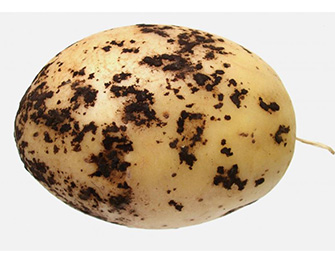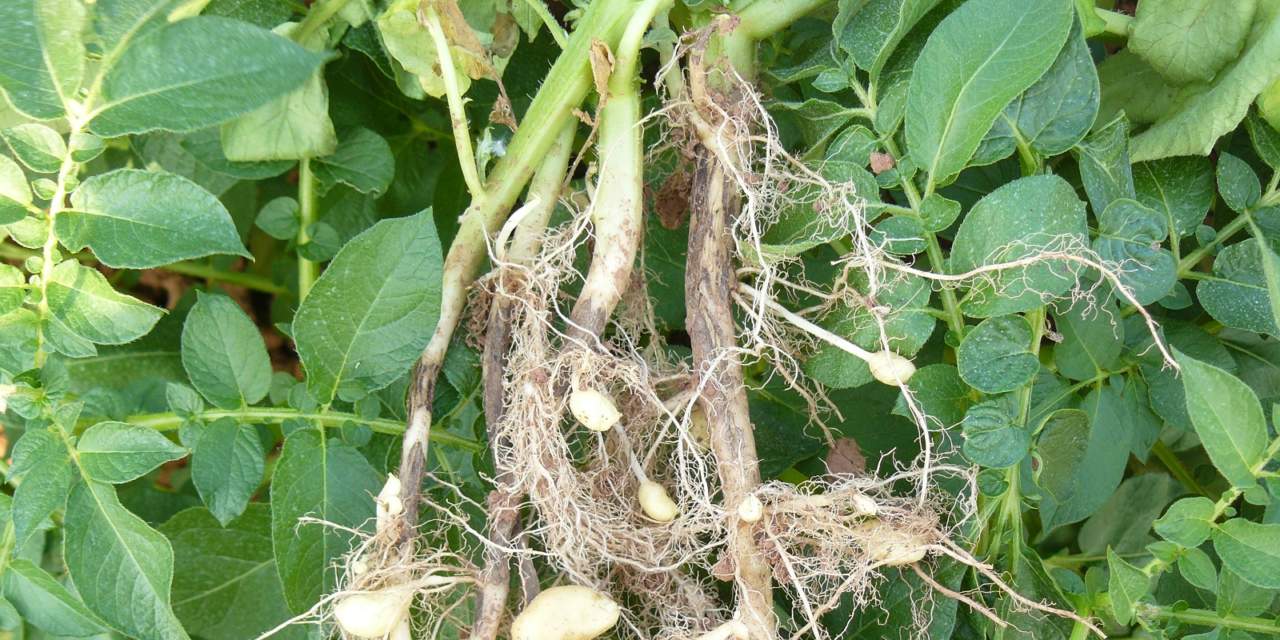
Black Scab, Black Scab Or Potato Pox
Rhizoctonia Solani
Pathogen:
Fungus
Type:
Risk:
INTERMEDIATE






DESCRIPTION
Description of the pathogen
Rhizoctonia solani is a phytopathogenic fungus that causes the disease known as black scab, black scab or potato pox. This fungus develops in the soil and spreads through resistance structures called sclerotia, which can survive in the soil for long periods. The spores of the fungus infect potato plants through wounds or natural entry points, such as the roots or stem. Rhizoctonia solani is able to survive and spread in various climatic conditions, and can affect different crops, including potatoes.
Description of the disease
Potato black scab produces necrotic, scabby lesions on the tubers and shoots of the potato plant. These lesions usually appear as brown or black Taches on the surface of the tubers and can vary in size. Additionally, the fungus can affect roots and shoots, causing weak growth or stunting in young plants.
• Necrotic and scabby lesions on potato tubers.
• Brown or black Taches on the surface of the tubers.
• Weakness in the growth of young plants.
• Reduction in the quality and quantity of the harvest.

TEMPERATURE AND HUMIDITY
18°C - 25°C
70% - 80%

TRANSMISSION ROUTES
Contaminated soil, sclerotia, contaminated growing tools, direct contact with infected plants or tubers.

Chemical treatments
CONTROL
• AZOXISTROBIN 25% [SC] P/V
• Flutolanil 46% [SC] P/V
Authorized treatments in organic farming
-
Biological control
• BACILLUS AMYLOLIQUEFACIENS subsp. plantarum (strain D747) 5% [SC] P/V
• BACILLUS SUBTILIS (STRAIN QST 713) 1.34% [SC] P/V
• TRICHODERMA ATROVIRIDE (STRAIN I-1237) (1x10E8 cfu/g) 5% [WP] P/P
Preventive treatments
• AZOXISTROBIN 25% [SC] P/V
• BACILLUS AMYLOLIQUEFACIENS subsp. plantarum (strain D747) 5% [SC] P/V
• BACILLUS SUBTILIS (STRAIN QST 713) 1.34% [SC] P/V
• Flutolanil 46% [SC] P/V
• TRICHODERMA ATROVIRIDE (STRAIN I-1237) (1x10E8 cfu/g) 5% [WP] P/P
• Use potato varieties resistant to the disease.
• Practice crop rotation with non-host plants to reduce the presence of the fungus in the soil.
• Disinfect cultivation tools to prevent the spread of sclerotia.
• Maintain proper soil management, including humidity and pH control.
• Apply specific fungicides according to expert recommendations.
• Regularly monitor crops for early signs of the disease.
Recommendations
*The recommended treatments are recommendations based on the authorities' databases and in no way replace the guidelines established by the legislation of each country.





